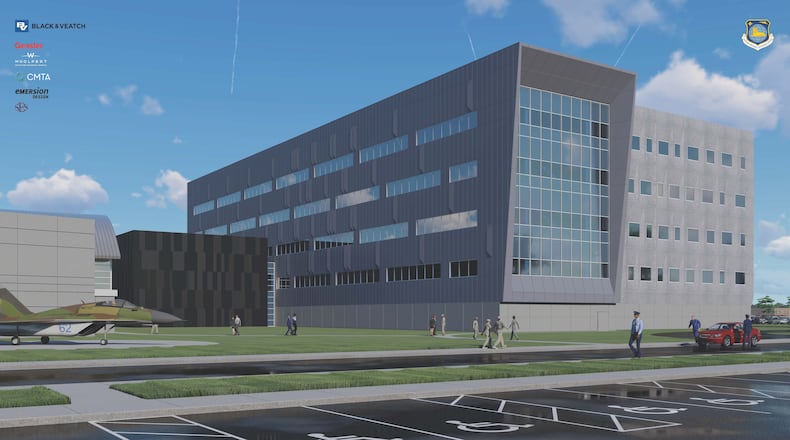“It’s going to add about 250,000 square feet,” Calabrese said of the new building. “It’s going to help us — we have about a thousand seats short for the personnel we’ve got. It’s going to help build that out.”
The center is crucial to the challenges the nation faces in the domains of air and space, the colonel said.
“We are constantly engaged on our requirements, as you can imagine, both in air and space,” said Calabrese, who leads 4,000 military and civilian employees in examining technical intelligence and threats to the United States.
Referring to the recent “Accelerate Change or Lose” paper by Air Force Chief of Staff Gen. Charles Brown, Calabrese cautioned: “We have to think differently to drive the Air Force differently, because we cannot be sure that we will win the next conflict. We have to accelerate what we’re doing. And going forward on this space integration is one way in which we’re accelerating and heeding that call."
While the NASIC construction and expansion project is big, it’s not the biggest construction project in base history. The merger and creation of missions at Wright-Patterson in the aftermath of the 2005 BRAC (Base Realignment and Closure) process was bigger.
The Space Forum, the first hosted by the Dayton Development Coalition, celebrated Ohio’s contribution to space defense and explored the potential for boosting the size of that contribution.
The coalition has called for the Dayton region and Wright-Patterson to serve as permanent headquarters for U.S. Space Command, a self-nomination that places the area firmly in a nationwide competition for that headquarters and an estimated 1,400 accompanying jobs.
Ohio Gov. Mike DeWine, who recorded an address for the forum, said, “The pathway to the moon has been and continues to be through Ohio," he said, referring to NASA Glenn, Battelle Memorial Institute and Wright-Patterson’s place in the state. “Ohio leads the world in aerospace, and these Ohio facilities lead the nation.”
“Ohio is a powerful contender to be the home of the permanent headquarters of the United States Space Command,” DeWine added.
At the Springfield Air National Guard Base, Lt. Col. Michael Roark, commander of the 178th Wing Intelligence Group, said some elements of his group can expected to be a “target” to become part of a new Space National Guard, tied to the new U.S. Space Force, the first U.S. military branch created since the late 1940s.
Roark oversees 302 people from nine states, most of them in Ohio, and they are far more than a “weekend warrior” unit, he told forum viewers.
The unit’s membership is 30% full-time, with members deployed all over the world. Group membership is young, with 80% of them working as career intelligence professionals, and they are highly educated, with half having college degrees and the rest pursuing degrees.
"We’ll continue to support space, and it will continue to be a growth area for us, Roark said.
Jack Blackhurst, the AFRL executive director, said AFRL has been involved with space from the beginning of its mission. When the first chimpanzees went to space on U.S. rockets, AFRL provided those chimpanzees to NASA, he said.
“Every directorate we have at AFRL is supporting space in some form or fashion," Blackhurst said.
Space Force and Space Command are distinct. Space Force is a U.S. military branch, like the Air Force. Space Command is one of 11 unified combatant commands. The services — Army, Air Force, Navy, Marines, Space Force — organize, train and equip forces and capabilities to these 11 combatant commands so that they can perform their missions.
About the Author


